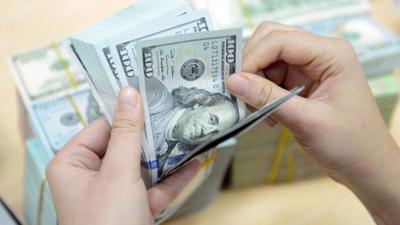Gasoline Price Surge Drives April CPI Increase
The recent surge in domestic gasoline prices, propelled by global fuel market trends, has emerged as the primary catalyst behind the uptick in Vietnam's Consumer Price Index (CPI) for April 2024.

According to data unveiled by the General Statistics Office on April 29, 2024, the CPI climbed by 0.07% compared to the preceding month, with gasoline prices notably driving the inflationary trend.
The incremental rise in CPI stands at 1.19% since December 2023 and marks a 4.4% increase year-on-year. This upward trajectory in inflation has been consistent, averaging at 3.93% for the initial four months of the year when juxtaposed with the corresponding period in 2023.
Breaking down the April CPI surge, eight categories of goods and services recorded amplified price indexes, while three categories saw a decline. The transportation sector exhibited the most pronounced increase, with a surge of 1.95%, contributing 0.19 percentage points to the overall CPI rise.
This surge was predominantly fueled by a 4.78% escalation in domestic gasoline prices and a 2.01% hike in diesel oil prices, both influenced by periodic price adjustments.
Additionally, ancillary services within the transportation domain experienced upticks: driver's license fees rose by 0.26%, vehicle maintenance services by 0.47%, and car parking services by 1.09%, buoyed by heightened demand.
Air passenger transport prices surged by 10.42%, while waterway, road, bus, and taxi fares recorded incremental increases, all attributing to the surge in gasoline prices. However, new car prices and self-driving car and motorbike rental services observed marginal declines.
The medical sector followed suit with a substantial 0.92% increase, primarily driven by seasonal weather patterns fostering the proliferation of disease-causing viruses. Consequently, the demand for immune-boosting medications surged, evidenced by price hikes in pain relievers, antipyretics, and anti-inflammatory drugs.
Moreover, the miscellaneous goods and services category surged by 0.27%, with personal items experiencing a notable increase of 0.6%. Notably, jewelry prices surged by 5.4%, and personal services saw a 0.52% uptick.
Conversely, the education sector witnessed a downturn, with a 2.93% decrease compared to the prior month, thereby contributing to a 0.18 percentage point decrease in overall CPI. This decline was attributed to governmental directives aimed at stabilizing tuition fees, resulting in adjustments by educational institutions in adherence to the regulatory framework.
In tandem with the CPI escalation, core inflation for April 2024 rose by 0.17% month-on-month and 2.79% year-on-year. Over the initial four months of 2024, core inflation averaged at 2.81%, marginally lower than the general CPI increase of 3.93%. Notably, food, gasoline, and oil prices were identified as key contributors to core inflation, despite being excluded from the basic inflation calculations.
On the international front, escalating geopolitical tensions in the Middle East propelled global gold prices, with the average world gold price surging to $2,322.36 per ounce in April 2024, marking an 8.54% increase compared to March.
Domestically, the gold price index mirrored this surge, escalating by 6.95% month-on-month, 17.01% since December 2023, and 28.62% year-on-year, with an average increase of 20.75% over the first four months of 2024.
Simultaneously, the strengthening of the US dollar on the global stage, attributed to the US Federal Reserve's delay in signaling monetary policy adjustments, led to a surge in the US dollar index to 104.95 points by April 25, 2024, marking a 1.4% increase from the previous month.
Domestically, heightened demand for US dollars for raw material and fuel imports saw the average US dollar price on the free market hover around 25,120 VND/USD. The US dollar price index in April 2024 surged by 1.2% compared to the prior month, 3.03% since December 2023, and 6.51% year-on-year, with an average increase of 4.6% over the first four months of 2024.
As Vietnam navigates these economic dynamics, stakeholders monitor the evolving landscape, cognizant of the intricate interplay between global market forces and domestic policy decisions, each exerting a discernible influence on the nation's economic trajectory.







